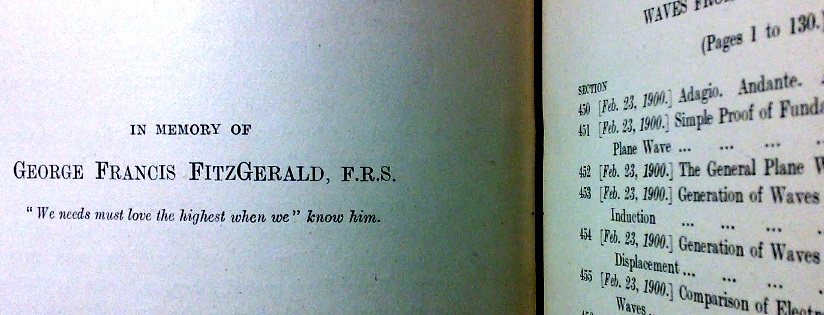 The Hidden Truth – Chapter 2 Notes
The Hidden Truth – Chapter 2 Notes
These notes are loaded with spoilers for Chapter 2 of my forthcoming novel – The Hidden Truth. I suggest you read the chapter first before continuing. Ready? Let’s begin.
The technical books I mention, like Calculus Made Easy or Maxwell’s Matter and Motion are well worth the time and trouble for beginning students of math and physics to peruse. Parts will be complicated, so find a tutor or teacher to help you over some of the tough spots. I wish I’d known of these books when I was starting out.
In the alternate timeline of The Hidden Truth, President Lieberman got the Congress to pass the “Preserving our Planet’s Future Act” as a monument to the late President Gore. The carbon taxes involved – called the Gore Tax by detractors – imposed a serious drag on the economy, devastating coal, oil, and natural gas production. The irony is that the climate in this timeline is identical to our own – pretty much flat in temperature since the beginning of the century. Only this is taken as evidence that the Gore Tax – excuse me, the “Preserving our Planet’s Future Act” – was effective in its mission and saved the planet from the scourge of greenhouse warming. Only “climate deniers” argue that it was all just natural variation and the continuing rise of carbon dioxide means it was ineffective. I also included a plug for one of my favorite science blogs – Anthony Watt’s Watts Up With That, the world’s most viewed site on global warming and climate change. You’ll see the latest posts in my blogroll.
The fact that Firefly was not cancelled in its first season in this timeline and is now in its second season places this story in the spring of 2004. In Chapter 8, I will reveal who wins the 2004 presidential election in this timeline. For now, though, the details of this alternate timeline make little difference in the day-to-day life of the protagonists in Sherman, TN.
I had a whole back story worked up on Kudzu Joe Tolliver, namesake of Kudzu Joe’s Coffee Shop, and how he spread kudzu from one end of the south to the other in a hybrid of Johnny Appleseed and a zombie epidemic. Unfortunately, it didn’t fit in the arc of this book. I’m sure the opportunity to tell that story will arise in a future installment.
And I couldn’t resist the temptation to work in a mention of the “Barenstein” bears – a subtle indication that this is a different timeline from the one in which you may have read the Barenstain Bears books as children.
This chapter introduces one of my favorite characters – Amit Patel. Amit is a somewhat nerdy guy who got frustrated at his lack of success with girls. Like many nice guys who wonder why the girls always seem to go for the arrogant jerks, he began following the blogs and writings of self-described “pick-up artists” online. Although I’m out of the game myself, I enjoy the insights of these “Red Pill” writers who explore issues in contemporary masculinity and femininity. Many of these writers are confident, successful guys sharing their insights and opinions. Vox Day’s Alpha Game Blog is a good starting point, not just for the usual daily post, but also as a gateway to other blogs whose latest content you’ll find in the right side bar.
Amit is fun to write. I put myself in his mindset and the dialog pours out. He’s provocative, well-read, and uninhibited, but really inexperienced and prone to conspiracy thinking which sometimes gets him in trouble. Of course, in a fictional setting involving a vast secret conspiracy, conspiracy thinking is actually a very good trait to have. It’s not actually paranoia if they really are out to get you. A couple of times I started a scene with Amit and the scene went a completely different direction due to the consequences of Amit’s influence.
The particular phenomenon at work in Chapter 2 is what Eric S. Raymond, the noted open source software guru, described as “Status signalling and cruelty to betas.” Here’s how he describes the problem:
A man courting a woman is implicitly making a status claim: I am good enough for you – in Red Pill terminology, my SMV (sexual market value) meets or exceeds yours. Because other women use male attention to measure SMV and status, such a claim can be threatening to its target because, from a low-status male, it threatens to lower her status, especially if she accepts it.
A woman can deal with this by not merely rejecting a man she evaluates as not being worthy, but publicly insulting him for trying. “How dare you think you’re good enough for me?” is different from a simple “Not interested” because it’s a status defense.
Thus, hot chicks are systematically cruel to beta nerds. It’s a way of socially protecting the proposition that their SMV is high enough to capture a real alpha, and their status among peers.
Raymond’s observation is that this incentivizes girls to be particularly cruel to boys who may be close to their own status, but whose attentions might weaken the girl’s status within her own social group or with the higher value boys whose attentions she seeks.
That’s right, guys – being in her league, or nearly so, increases the chance that she’ll have to be nasty to you to protect her game position. The well-spoken, decently groomed nerd is going to get it in the neck from popular hot chick the worst.
Although I’ve been out of the dating game for well over a decade now, it was a fun exercise to help Amit devise a counter-strategy that might yield dating success by exploiting this very phenomenon.
Amit’s “game” also gave me a chance to introduce Sheriff Gunn. He’s another colorful character whose dialog is a pleasure to write. I delight in minimalistic descriptions that rely heavily on conventional tropes and the reader’s preconceived notions of how things work. It saves me time to present a good ol’ boy Southern sheriff throwing his weight around and let the reader imagine the rest. Then I take even greater pleasure in deliberately violating expectations and by so doing adding greater depth to a character. You are warned.
This also gave me the opportunity to provide some initial hints of the back story of how the narrator’s parents came to town and the conflict between his father and his mother’s family. The name of the “Tolliver” clan arose from my amusement at how the Georgia city “Taliafero” is pronounced. The Tolliver backstory also explains how a formerly world-class but now hopelessly dated technical library ended up in tiny little Sherman, Tennessee, nestled up in the Appalachians somewhere in the neighborhood of Knoxville.
Chapter 2 further introduces the first hint of the “hidden truth” at the heart of the novel’s conflict. More will be disclosed about these mysterious bouncing radio waves as the story progresses. I actually prepared figures to illustrate the changes and “printing defects” described in the book, but decided not to include them after all.

One fun aspect of my electromagnetic conspiracy is that the suspicious printing defects I mention through the novel really are present in the actual real-world copies of the books I describe. For instance, Franklin’s Electric Waves really does mention Heaviside on both pages 113 and 115 but only has an index entry for Heaviside listing page 113.

And of course, Maxwell, Hertz, and Fitzgerald all really did die prematurely, at the peak of their professional productivity. Here’s Heaviside’s dedication to FitzGerald from the third volume of Electromagnetic Theory.

I’ll have more to say about Heaviside as our hero uncovers additional pieces of the puzzle. I ultimately decided to omit all these figures from the book. Kindle charges an extra fee to the author based on the size of the book. Including all the figures I originally intended would cost me a noticeable fraction of the potential royalties. Perhaps I’ll include them in a future print edition of the book.
Total Information Awareness was a real-life program that was ultimately disavowed publicly, but implemented secretly according to the revelations of Edward Snowden. In-Q-Tel really is the venture capital arm of the nation’s intelligence services – a private, not-for-profit VC that makes strategic investments in businesses creating information technology useful for national security. Ironically, after I wrote Chapter 2, I came across reports that In-Q-Tel really did provide seed funding for Google.
My inspiration for the Internet conglomerate “Omnitia,” however, was the way in which the Navy attempted to monopolize radio in the wake of the First World War. Amit alluded to this in the story. The story of the Radio Corporation of America (RCA) and in particular how David Sarnoff crushed Edwin Howard Armstrong’s FM radio technology may be read in Tom Lewis’ excellent Empire of the Air, or viewed in a great documentary of the same name by Ken Burns (see episode 7). The geopolitics of RCA in the context of American efforts to overthrow the Marconi monopoly and British dominance of the worldwide telegraphy system are well described in Peter J. Hugill’s Global Communications Since 1844: Geopolitics and Technology. I’m imaging that a secret Patriot Act on steroids arose in the timeline of The Hidden Truth.
Look out for Chapter 3 of The Hidden Truth, next week.



